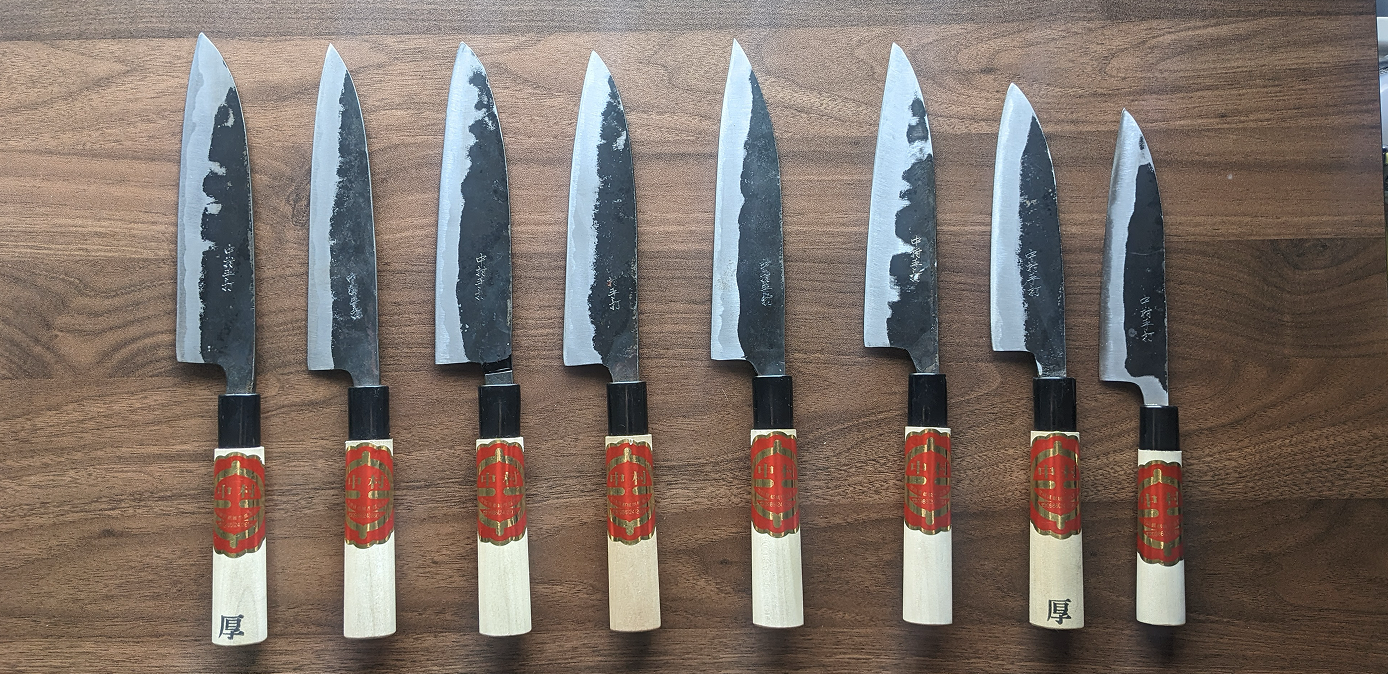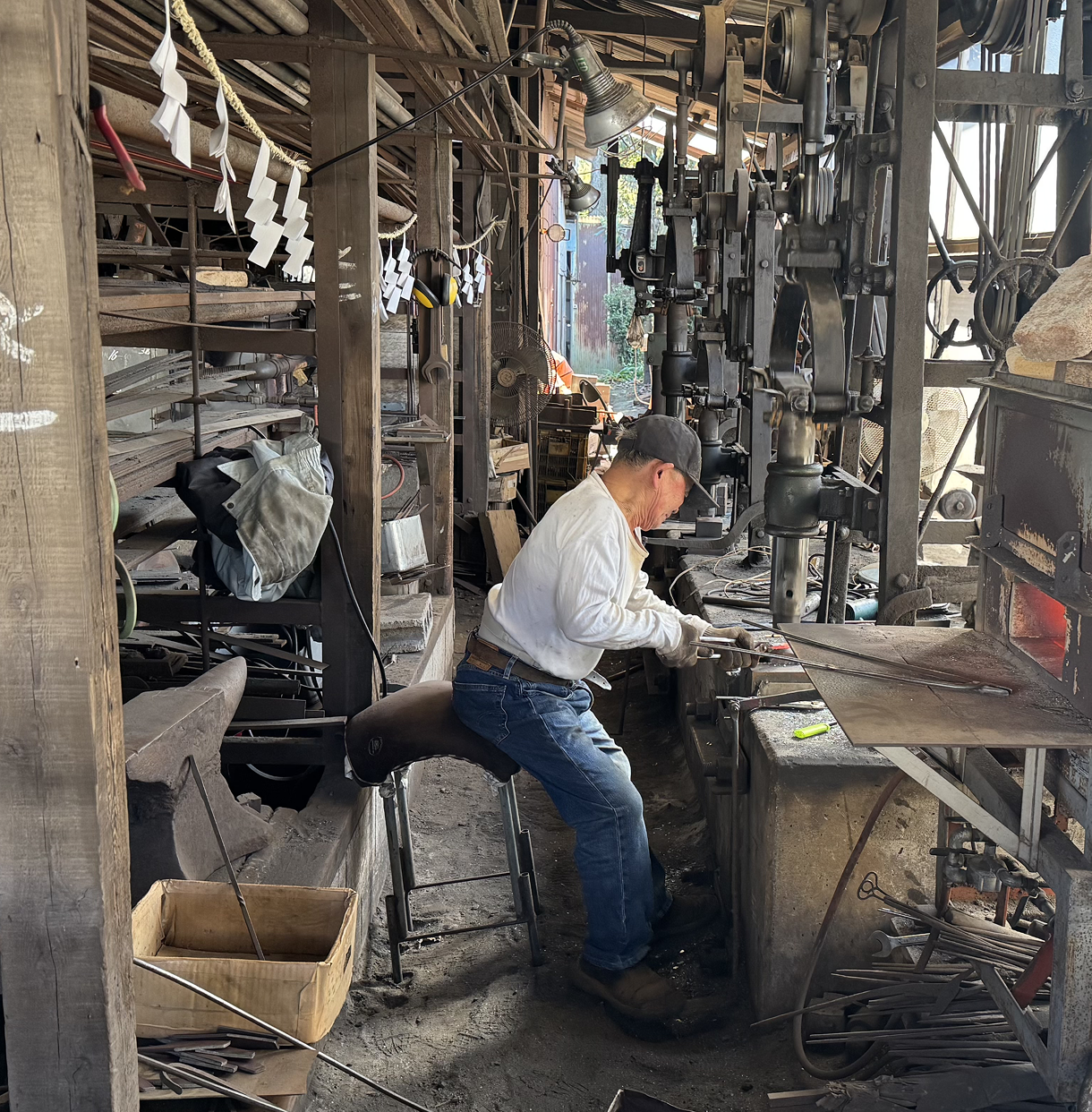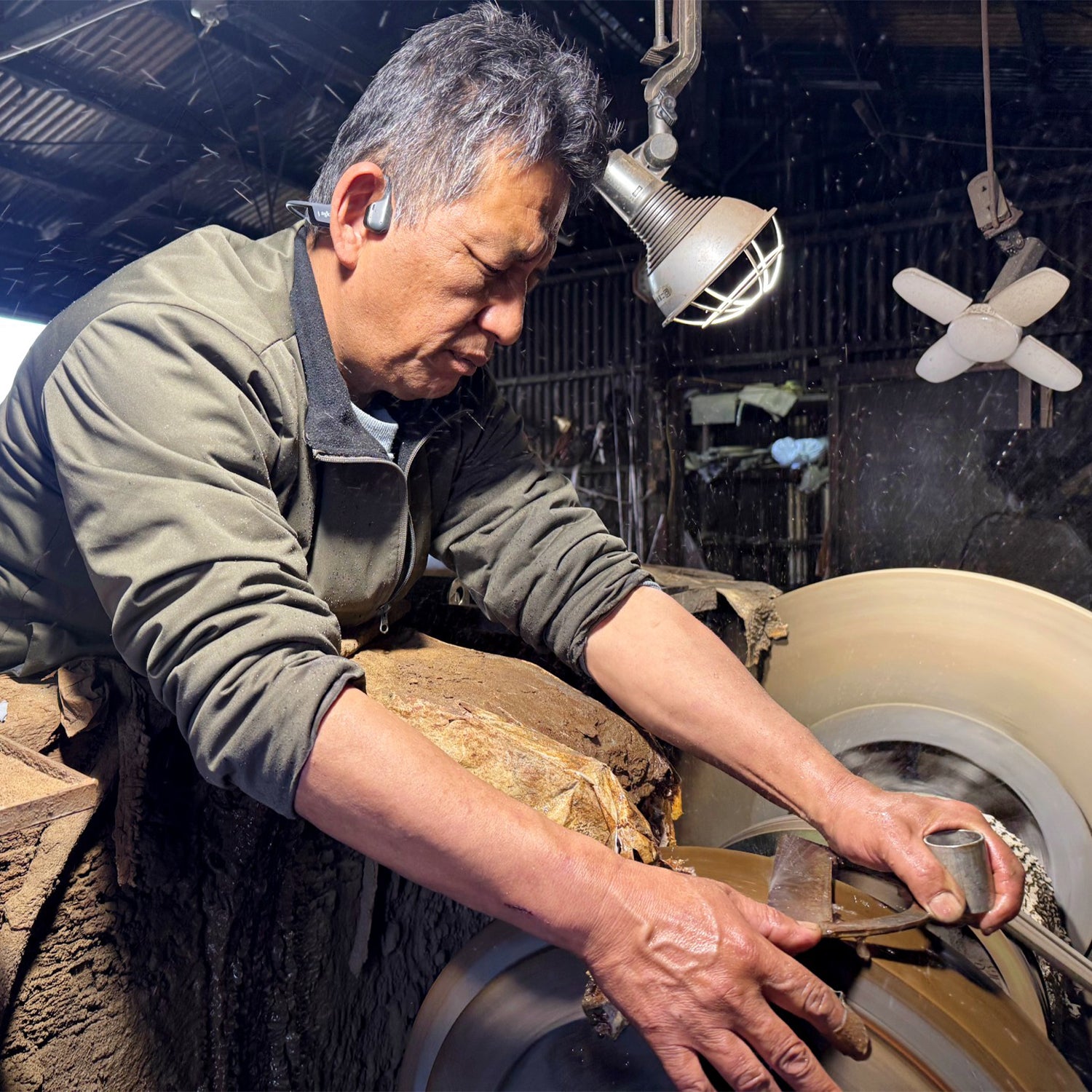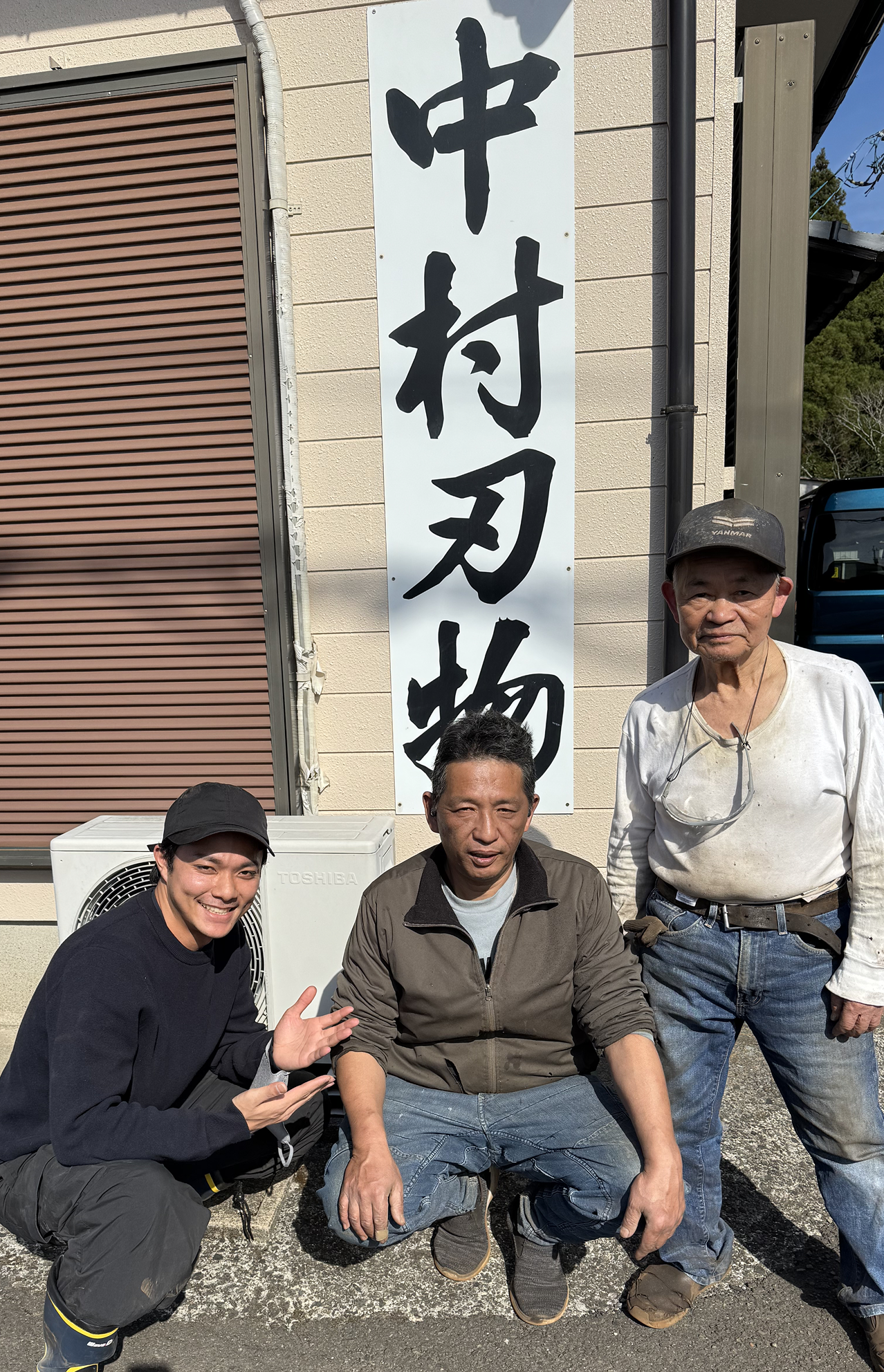



























Nakamura Blacksmith Kurouchi Santoku 165mm
Includes:
- Kurouchi Santoku Kitchen Knife (handcrafted from steel, 16.5cm blade length
- Red Sharpening Stone (15cm x 4cm x 3cm)
- FREE WORLDWIDE SHIPPING
A handcrafted double bevel knife made from Shirogami (white steel) No. 2 steel, a very traditional steel prized by blacksmiths and knife enthusiasts alike for its great edge retention and legendary sharpness.
The knife has a light poplar wooden handle, and the blade is engraved with the signature of the smithy. The pack includes a small whetstone you can use to keep your blade clean and sharp.
About the blade type: This is a multi-purpose knife, especially handy for cutting veggies.
*Each knife is crafted by hand, so there may be slight variations in weight and dimensions. We ask for your kind understanding.
*Depending on the number of orders and smithy availability, it can occasionally take up to 3 weeks for your knife to ship.
*This knife is made from steel, so it is normal for a certain amount of rust to form over time. Please use the sharpening stone included with your order to remove any rust. You will find a video which explains how to sharpen your knife at the bottom of this page.
*Depending on the value of your order and local import rules in your country, you may be required to pay additional import taxes when your package arrives.
Nakamura Blacksmith, Time-Honed Blades, Forged with Soul
AS FEATURED ON YOUTUBE
Watch Daisuke Nishida hand-forge layered steel into knives that combine beauty, precision, and strength.
OVERVIEW

Toshio Nakamura doesn’t forge for volume. He crafts to meet real-world needs. Each knife begins with a request, often from long-time customers who know exactly what they want. A specific weight, a particular edge angle, a blade that resists dulling during spinach harvest, these are the starting points. No two knives are quite the same. He listens, adjusts, and builds one by one. Where others use industrial presses, Nakamura still works by hand, fine-tuning thicknesses and edge profiles based on how each tool will be used. The result is a knife that’s not only sharp, but purposeful.
PHILOSOPHY AND PROCESS

Crafted by Need, Not by Numbers
Every blade that leaves Nakamura’s forge exists for a reason. Whether it’s a small sickle used in the mountain fields of Kumamoto or a handcrafted kitchen knife ordered by a returning customer, each tool is made with a clear purpose.
Toshio doesn’t chase volume. Instead, he draws on decades of intuition and field knowledge, often adjusting the shape or grind based on how and where a blade will be used. If a local farmer needs a tool to cut thick grass near a stream, or a hunter requests a blade that won’t slip when wet, he’ll forge it to match that reality, not a template.
This philosophy has earned him a loyal following across the region. His customers trust that what they receive isn’t just sharp, it’s suited to their lives.

Hammer, Heat, and Human Judgment
Forging at Nakamura Blacksmith is a delicate balance of temperature and timing. The steel is heated to around 850°C, never beyond 880°C, to preserve edge integrity. Depending on the material, tempering is done under 800°C.
Toshio explains that even a few degrees too much can ruin the steel. With both large and small hammers, he shapes the metal quickly and precisely, using muscle memory and instinct rather than machines. The process includes two hardening cycles to reduce warping and increase edge strength. Every blade is adjusted and refined mid-process, no batch is identical.

A Lifetime of Work in Every Knife
Finishing a Nakamura blade isn’t just about looks, it’s about readiness. After sandblasting to reveal the steel line and visual clarity, each blade is sharpened by hand. The process includes water grinding, edge honing, and test cuts (often on newspaper) to verify balance and sharpness. Slight bends are straightened by eye and touch.
Once the handle is fitted, the blade is ready for use but the commitment doesn’t end there. Customers are encouraged to return for re-sharpening and maintenance. As Toshio says, it’s not about chasing trends, but about making tools that stay useful for life.
MESSAGE FROM THE MAKERS

I’ve been making knives for nearly 70 years. Some things have changed, but what matters hasn’t. I still craft each blade by hand, one at a time, just like I always have. Customers don’t come to me for mass production, they come with ideas, with needs, and I make something that fits.
Every knife I make reflects decades of trial and error. Some days I discover something new, even now. That’s the beauty of this work: you never stop learning, and you never stop improving.
How to Sharpen your knife
Caring for your knife will make it last you for decades. After use, wash it with clean hot water, dry it off thoroughly, and place it in newspaper to prevent rusting. Check out the video below for more information on how to sharpen your knife with a sharpening stone, and how to store it safely.
